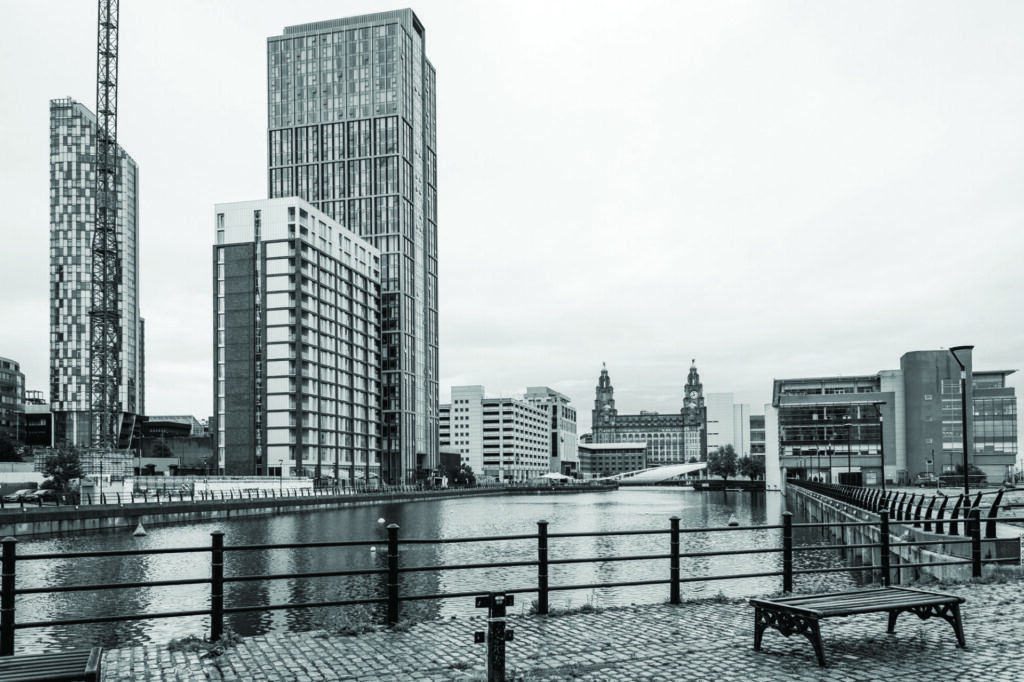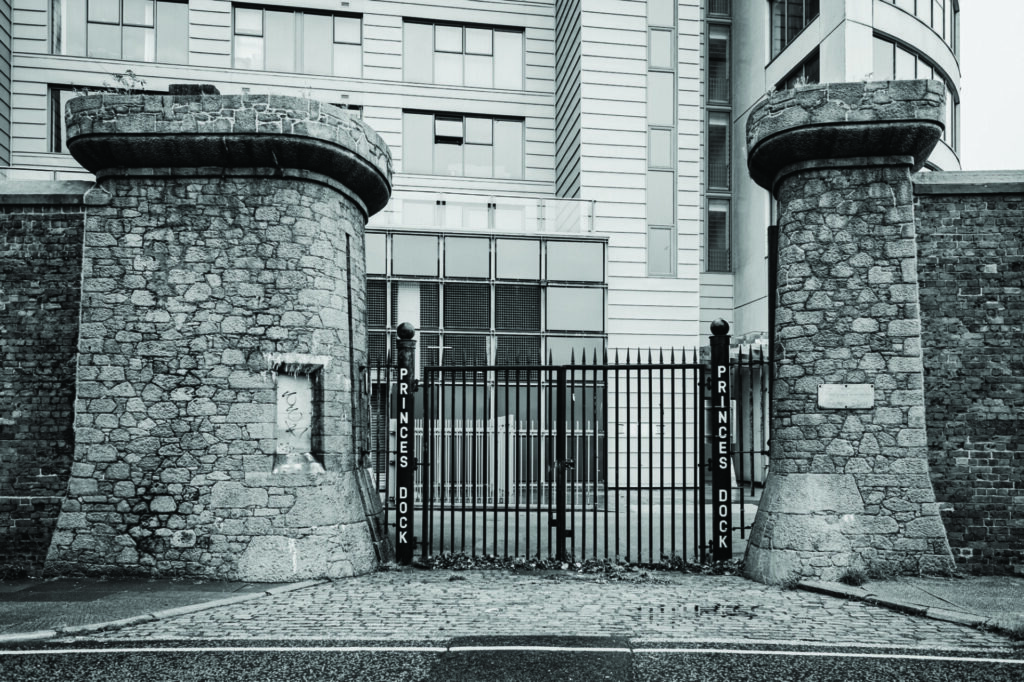Tim Daly explores the streets of Herman Melville’s Liverpool in search of any remaining traces of the 19th-century docks and surrounding warehouses. Discovering a city’s hidden past is a great way to frame your practice.
All Images ©Tim Daly

1. Prince’s Dock
Melville’s account of arriving in the port of Liverpool is a vivid one and the author’s powers of observation are second to none.
His ship, The Highlander, squeezed into a berth at Prince’s Dock alongside merchant ships from the world over. Connected to Prince’s Half-Tide Dock, which has a series of lock gates to the Mersey, ships could access the river regardless of the tide.
The high-speed transport hub of its day, Prince’s Dock was rammed full of vessels, crew and goods. Nowadays, the dock, as pictured, still occupies the same footprint but stands at the cusp of an epic redevelopment. Chopped, trimmed and lined with new materials, it’s difficult to see any remaining signs of the 19th century. Features which made the city such a world-renowned trading centre have been replaced by identikit multistorey car parks and bland office headquarters.

2. Gated communities
At its peak, the port of Liverpool was importing and exporting goods from all corners of the earth. The docks were protected by thick perimeter walls, access through which was controlled via checkpoints. Melville’s account of lunchtime, when hundreds of sailors passed through the gates, describes a depressing line of beggars standing outside each day, appealing to the sailors’ charity as they walked into town. The solid walls still remain, as do many of the original granite gateposts like this one, but nowadays modified as access points to gated private housing and businesses. There’s an interesting parallel to be drawn between their former use and their purpose today.
![]()
3. Iconic locations
North of Prince’s Dock lie many of the maritime locations mentioned by Melville, serviced by one long continuous thoroughfare known locally as the Dock Road. Mothballed docks largely stripped of their former functions and purpose line the riverside awaiting redevelopment, but there’s a fascinating cluster of old warehouses and streets between the city and the new football stadium.
The jewel of this area is the bonded tea warehouse in Dublin Street, built in 1840 and now Grade II listed. One of the last remaining warehouses in the city that hasn’t been converted into apartments or a hotel, the building featured as a backdrop to photographic shoots of the Beatles and Barry Feinstein’s iconic images of Bob Dylan shot in 1966. The warehouse, pictured here, is still standing as a backdrop to more recent buildings and has a fascinating patinated surface.
Read more in issue 285.
